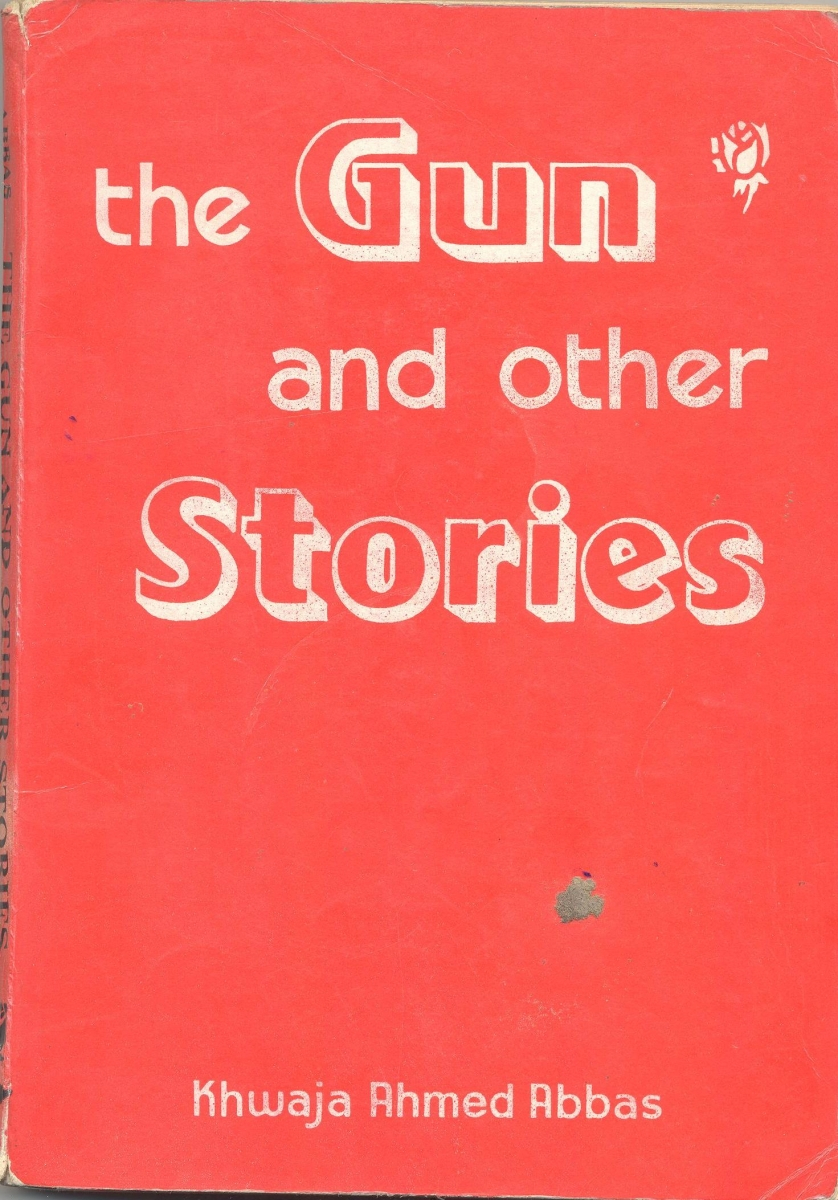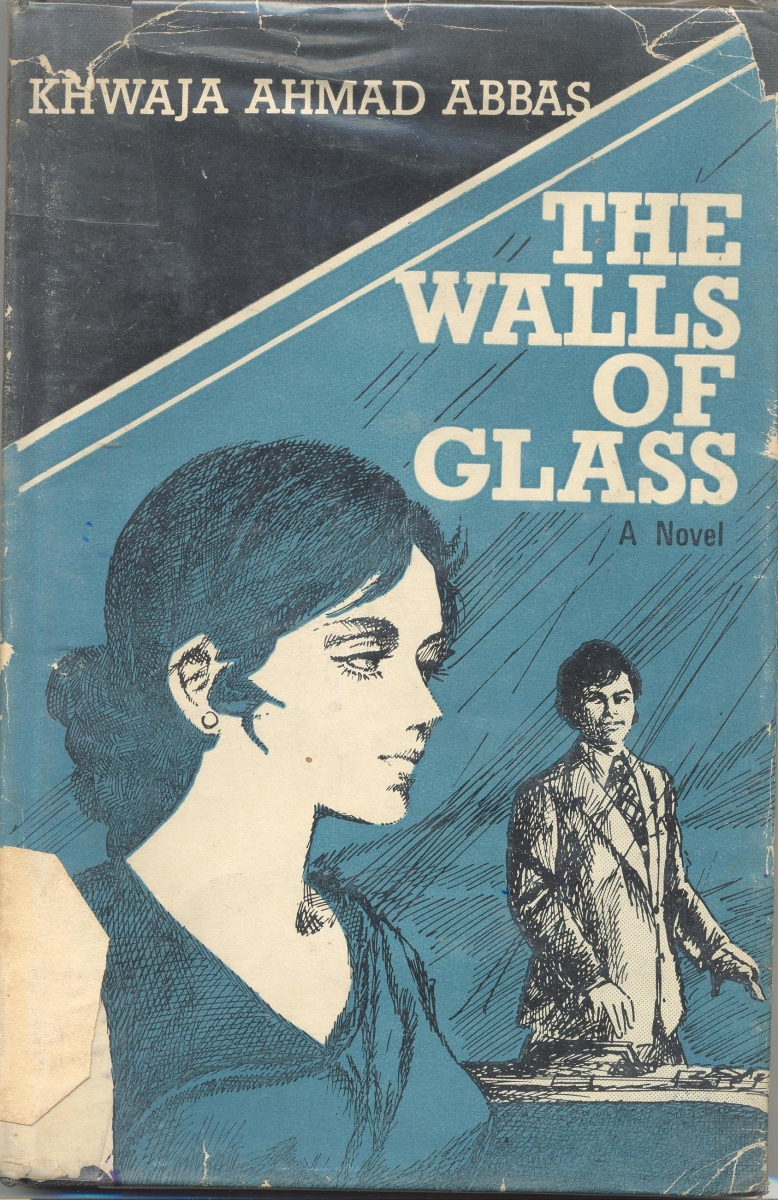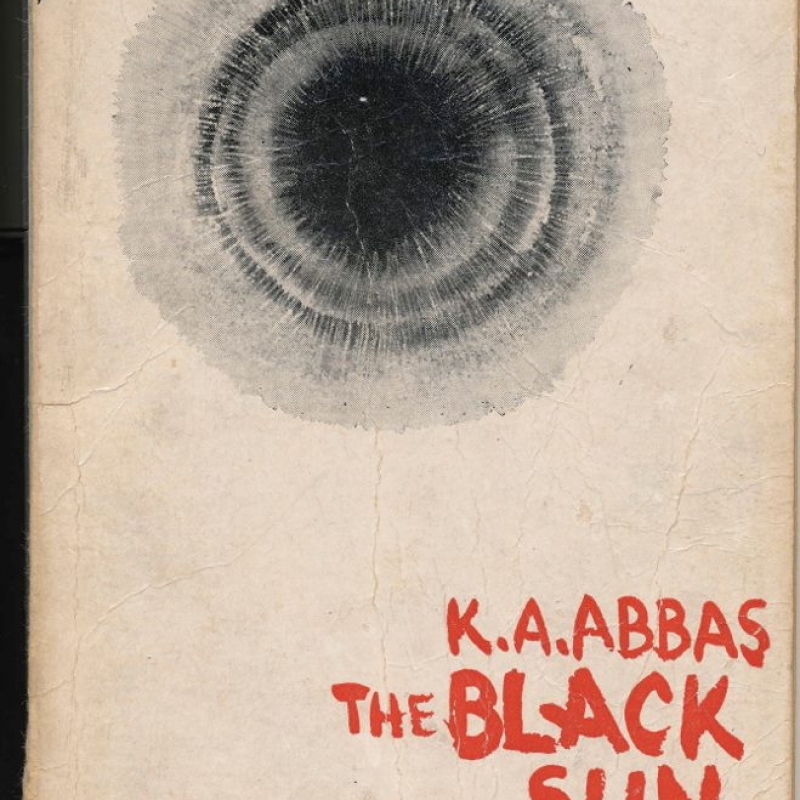The stories of Khwaja Ahmad Abbas focus on the much talked about ‘common man’. He is a writer who consciously depicts the tales of those ordinary people who accomplished heroic deeds simply by virtue of their undaunted spirit and the sheer will to survive. Abbas belongs to the tradition of Dr Mulk Raj Anand who created a hero like Bakha, a scavenger, in his classic novel Untouchable (1935). Anand was inspired by Mahatma Gandhi and his movement against untouchability. He was equally touched by the ideas Marxist philosophy epitomised in the October Revolution of Russia in 1917. It was this ideological base which motivated K.A. Abbas to look for real life stories of poverty and hunger, exploitation and protest, alienation and hope, patriarchy and the rise of the woman’s voice. In fact, the fiction of Abbas, like his films and journalistic writings, brings the common man and his concerns centrestage.
Khwaja Ahmad Abbas is known as a film maker and a journalist all over the world. Not many people know that he wrote some 73 books in the genres of fiction and non-fiction prose in Urdu, English and Hindi. His fiction includes 15 novels and seven short story collections. These works reflect his deep-seated optimism and commitment to social transformation. He stood firmly for the values of democracy, secularism and socialism and proved himself to be an ambassador for the working and toiling masses of the world.
The short stories of Khwaja Ahmad Abbas have been published in a number of collections beginning with Blood and Stones and Other Stories (1947), Rice and Other Stories (1947), Cages of Freedom and Other Stories (1952), One Thousand Nights on a Bed of Stones and Other Stories (1957), The Black Sun and Other Stories (1963), Men and Women: Specially Selected Long and Short Stories (1977), The Gun and Other Stories (1985) and An Evening in Lucknow (2011). Of these the last collection An Evening in Lucknow has been published posthumously, with an editorial note by Suresh Kohli who as an editor has also compiled some very significant interviews of Abbas with reputed magazines of the country. His last story ‘Mother and Child’ based on the Bhopal Gas Tragedy was published after his death in The Illustrated Weekly of India in June, 1987. Mr S.A. Rehman who worked with Abbas for more than twenty-eight years as his secretary said that the title was initially different but was modified by the publishers.
Arguably, the most famous of Abbas’s stories is ‘Sparrows’ published initially in Urdu as ‘Ababeel’. Written when Abbas was 26, it was included in a West German anthology of the world's best stories. The story narrates the tale of a peasant boy Rahim Khan who has to suffer on account of the traditional and outdated notions of false pride in religion and family. He is not allowed to opt for the profession of his choice because, ‘a job in a circus was too lowly for a respectable peasant’ and to marry Radha, the daughter of the village banya (merchant), a kafir (non-believer), was just out of question. This frustration hardens him into a cruel man who is beastly in his behaviour with his wife, his children and even his oxen. He gets transformed only when he observes the sparrows in his house, which are so caring and affectionate towards their young ones. Aradhika Sharma, in her review of An Evening In Lucknow for The Tribune, comments on the story thus:
‘The Sparrows’, about which Mulk Raj Anand wrote, in January 1947, to Abbas, ‘The strength of your short stories, my dear, Abbas, lies in the fact that you have grasped the weaknesses of your characters amid their strengths’, is a moving tale of a bad-tempered, anti-social man who finally finds love in some baby sparrows. The story is O. Henry-esque in nature, reminding us of ‘The Last Leaf.’ (2011)
The bad-tempered man is made so by the unjust social norms which divide society into watertight compartments. The death of Rahim Khan is not natural. He is killed by communal frenzy and a sense of false pride in one’s religion and profession. It is ironic that the protagonist of the story, Rahim Khan, who is himself a victim of a decadent social order, is viewed as a self-centered man, a symbol of hatred and a menace to the society.
This story has been interpreted in many diverse ways. Some critics have treated it as a didactic story narrating how even birds can be a source of motivation for man and how the human world needs to draw lessons from the animal world, which of course, is a world of Nature. As Sharma writes:
‘The Sparrows’ is a wonderful story where nature teaches man to behave himself. What human beings could not demonstrate nature’s tiny creation, a happy sparrow-couple could effortlessly achieve. This story is remarkable not just for its narration but also for its characterization of the infra human, yet ultra humane sparrows. This is a very moving story of sorrow and disappointment of a supposedly hard-hearted man. His transformation from utter cruelty to one of endearing love and compassion forms the lifeline of the narrative. (2011)
Rice and Other Stories (1947) published in the year of transfer of power from the British depicts the prime concern of the country at that time, that of poverty and hunger. Rice is the main meal of about one-third of the population of this country. Abbas never minces his words while drawing a realistic picture of the plight of the people. The World Wars and the economic depression had brought in the Ration Control System and people had to stand in queue for hours waiting for their turn in front of Fair Price Shops. Abbas describes the plight of these people in a very convincing style:
Twisting like a serpent, creeping at a snail’s pace, buzzing like a swarm of bees, two long queues—one of men and the other of women—were advancing towards the Government Grain Shop. The women’s queue was even longer than the men’s; quite a furlong in length with its tail end in a narrow alley round the street corner.
Talking about the importance of the story ‘Rice’, Ravi Nandan Sinha makes a very apt comment:
‘Rice’, the first story in the first anthology is significant in the sense that it strongly points to the direction most of Abbas’s stories would take. It relates to the period just before Independence. Durga delivers a child while waiting in a queue for a small measure of rationed rice…The story reminds us of Mulk Raj Anand’s story ‘Birth’. Durga epitomizes the destitute millions of India. Penury takes away from her even the natural dignity of motherhood. (1993)
In the next collection of stories called Cages of Freedom and Other Stories (1952) the same question of poverty and starvation finds expression. ‘Flag’ narrates the story of a poor labourer, Ramoo, rendered jobless for quite some time. He doesn’t have anything to eat or to feed his daughter and wife. It is the day of freedom. He comes to know that some generous patriot is distributing puris (unleavened deep-fried Indian bread) and laddoos (ball-shaped sweets). He goes there and gets his share. He then asks for the share of his daughter and wife but is rebuked and insulted. The distributors ask him why his wife and daughter do not come themselves and take their share. Ramoo is too shy and humble to say that they have only one cloth to cover their bodies and when one goes out, the other two have to stay home. It might appear an exaggeration to some, but the fact is that this kind of stark poverty has been a reality and is a reality in some parts of the country even today.

This concern for the common man and his suffering runs through all the collections of short stories published by Abbas. The characters change with the locale but the issues continue to haunt the imagination of the author. In a story called ‘Thicker than Water’ published in his anthology The Gun and Other Stories (1985), Abbas depicts the plight of the urban poor who are unable to find any employment. In their misery they resort to selling their blood, a predicament which appears quite contemporary even in the 21st century. Of course, the menace of selling human organs has also added to the gravity of the situation. From the first collection of the stories to the last, Abbas shows a consistent concern towards the downtrodden. He depicts his characters with utmost sincerity and compassion. He is conscious of the socio-political causes of poverty and does not regard their poverty as a ‘fit punishment for their vices’. The poor are portrayed with respect and conviction.
The question of dignity of women in society is discussed very passionately these days. The instances of violence against women at the work place, in public transport and at home, have created a furore in the public sphere lately. More often than not the victims of gender violence are common women, especially those who are forced to work due to their economic necessities. The stories of Abbas depict this pathetic state of affairs. The protagonists in his stories include village girls, struggling actresses, nurses, flower girls, dancers and extras in the film industry.
However, these characters do not accept humiliation lying down but assert their identity and right in strong words. The best example of such an assertion is the story ‘The Dumb Cow’. The protagonist in this story is a young girl named Bholi. Her stepfather thinks of her as a burden and wants to get rid of her by marrying her to a greedy, old and lame man. Bholi tries to resist but is not given any space to express her views. She later realizes that her marriage is a commercial transaction and refuses to marry the old man. The exchange of words between the father and daughter indicate the author’s sympathies with the daughter:
‘Pitaji, take back your money. I am not going to marry this man.’
‘Bholi are you crazy?’ Ram Lal shouted, ‘You want to disgrace your family? Have some regard for our izzat daughter.’
‘For the sake of your izzat I was willing to marry this lame old man. But I will not have such a greedy and contemptible coward as my husband. I won’t. I won’t. I won’t.’ And she reiterated her determination as if she was in the grip of hysteria.’
‘Flowers for her Feet’ is a story in which the sexual exploitation of a girl is depicted. Chandra, the dancing girl is harassed and exploited by all, especially the economic elite as the rich people think that women are commodities which can be bought or sold for money:
‘The matter was clear. Chandra was a drop of honey over which poisonous flies were hovering greedily. Her body was a machine to make money and everyone was trying to own it.’
There are dozens of memorable women characters in the stories of Abbas. All of them do not belong to one category. There are characters like Chandra in ‘Flowers for her Feet’, Bina in ‘Twelve Hours’, Zafrani in ‘Saffron Blossoms’ and the unnamed wife of Rehman Khan in the ‘The Sparrows’, who represent traditional Indian women resigned to their fate. They accept the condition of oppression and subjugation as something inevitable. Durga in the story ‘Rice’ and Sylvia in the story ‘Sylvia’ form another category. They represent the enlightened women who work with men and are conscious of their rights and role in society. They are not merely domestic women confined to the chores of daily life but are equal participants in the socio-economic and political activities going on around them in the society. They represent the women rising and freeing themselves from the traditional bounds of slavery and subjugation. Mehmooda of the novel The World is my Village and Ajitha of The Naxalites can also be included in this category.
There is yet another category of women in the stories of Abbas: worldly-wise women like Radha in the story ‘Cold Wave’ published in the collection Thirteenth Victim and Other Stories (1986). The hero of the story, Nirmal, is a young graduate who falls in love with Radha, who is a prostitute. She also expresses her ardent love for him. Nirmal’s father doesn’t permit his son to marry Radha and threatens to disown him. When Radha comes to know that Nirmal will be disinherited of his wealth, she rejects his love and addresses him in a very cold way as if he was a complete stranger. In a story titled ‘Ajanta’ published in the collection The Gun and Other Stories, Abbas describes women, both Hindu and Muslim, who rejoice in the cold-blooded murder of victims of communal violence.
Abbas was conscious of the struggles of people across the world. He had travelled around the globe and had met world leaders like Nikita Khrushchev, Theodore Roosevelt, Jawaharlal Nehru and Indira Gandhi. As a journalist he kept an eye on the happenings around the world. This gave him an added advantage as a fiction writer as well. His canvas was vast and covered the issues of all of humanity. The story ‘The Black Sun’ portrays the racial discrimination suffered by African Americans in the United States and even at the United Nations (U.N.). The unnamed black lady who assists the black leader in entering the U.N. building describes how the black people were treated as second class citizens in the United States but when it came to fighting in the Korean War, they were sent to fight with the white American soldiers and die fighting an enemy whom they did not even know:
‘And then there was the Korean War and the white ones decided that though we blacks were not good enough to worship with them in their churches, or to send our children to their schools, or even to travel with them in the same railway compartment, we were good enough to be sent with them to this war to die along with white soldiers.’
Abbas is essentially a film director. Even in his short stories he is able to create scenes which would make a grand climax in a film. This ability to visualize the irony in a grim event enables him to imagine the death of young Henry who is fatally shot in his school by a bullet fired by white demonstrators opposing the admission of black students to the school where children of white Americans studied. Young Henry clasps the Bible close to his heart. That was all he could defend himself with. The bullet hits at the very page where the Ten Commandments were written including: ‘Thou shalt not kill’. The whole incident is described so dramatically that it appears as if the incident is taking place right in front of the reader. Abbas was against all discrimination be it on the basis of race, colour, creed, gender or religion.

He never misses a chance to attack such artificial divisions in his writings. In his autobiography I Am Not an Island he talks about these ‘Walls of Glass’:
I dared to suggest it was not a question of the colour at all. Otherwise why should white complexioned Nazis be persecuting equally white complexioned Jews? Why should the ‘Yellow’ Japanese be overrunning the territory of Yellow Chinese? Briefly, I stated the historical interrelation between imperialism, militarism, capitalism and Fascism. (2010)
In the Indian context it is the caste-based prejudice against the ‘untouchables’. Though the Dalit movement had not become sufficiently visible during the time Abbas was writing but still there are stories in which Abbas depicts Dalits getting united and asserting their rights. A close reading of the writings of Abbas shows us that this spirit of defiance expressed through organized collective strength becomes more pronounced in the later writings of the author. Abbas is an admirer of Gandhi in the initial phase, becomes an ardent supporter of Nehru and also an admirer of Indira Gandhi but towards the later part of his career he developed admiration for the revolutionary movements specially that of Naxalism which he depicted in the novel The Naxalites.
The story ‘The Gun’ published in the collection The Gun and Other Stories (1985), depicts the uprising of the untouchables. Ruldoo, a young Harijan boy draws a bucketful of water from the pucca well in his village. The village priest sees him do this. As a result, a collective fine of one hundred and fifty rupees is imposed on the Harijans of the village. If not paid, they are threatened with dire consequences. But these villagers who had always served the upper caste people without ever raising a question are not scared now:
'Now the Harijan Khet Mazdoors were also very defiant. They replied, ‘Today only Ruldoo came – tomorrow all of us will come to the well with our buckets and pots. We will see who dares to stop us.’
Aradhika Sharma, in her review of the collection An Evening in Lucknow talks of the relevance of the stories of Abbas in 21st Century. She remarks:
K.A. Abbas’s stories, written years ago, are as relevant to this day and age as they were half a decade ago. He has written on the themes of poverty, sadness, rural issues, people beset with hunger and oppression. His are stories of the ordinary people, the aam aadmi lok who are always around us but (thanks to the globalised glitz we prefer to soak in) we are not really interested in. Neither do we like to read stories about them nor watch them in TV serials or even look at or acknowledge them when we pass them by. ( 2011)
Suresh Kohli, who edited the autobiography of K.A. Abbas and the last collection of his stories, also makes some very relevant remarks about his stories:
Abbas raised a silent furrow in his vast attempts at creative communication. He was an unabashed admirer of Ernest Miller Hemingway’s narrative of combining fact with fiction to tell some simple, direct, humanistic stories without being moralistic or judgmental. There is nothing epical or ephemeral about the narratives that are generally full of pathos, dealing with everyday mundane experiences, and are characterized by understatement. And even though some of them have seemingly been culled out of journalistic reports, they are apolitical, but reflective of the times. (2010)
He further comments about the narratives chosen by Abbas, his characters and the way he treated his themes. It is interesting to note that the stories written by Abbas do not have a single outstanding historical figure as a hero. His narratives are drawn from everyday life and so are the characters. In fact, none of the stories have a hero in the traditional sense of the term. Nor are there any typical villains in the stories. As one of the leading progressive writers of the country, Abbas knew very well that socio-political and economic factors were responsible for the condition of the society. So, if one were to look for the villains in his stories, one would find them in the form of the socio-political and economic conditions at a given time. Kohli writes:
Abbas ... had a greater awareness of the changing scenario and growing reality around him. His stories had compassion devoid of any romanticism that characterized the work of his contemporaries. Each character in his stories, consciously or unconsciously, had a reason for his action. The stories are both in rural and urban settings and provide an insight into his thinking both as a writer and a journalist with a social awareness. (2010)
In his preface to one of Abbas’s early short story collections, Kohli observed:
'A few stories may provoke high-brow critics living in isolated ivory towers to utter the dreaded word ‘Propaganda’. But these stories are basically not about plans, projects, or policies of the government. They are about men and women, our contemporaries, the people of a new India, and how their subjective ‘inner life’ (their moments of tenderness and passion, frustration and exultation) are inexorably being changed by the dynamics of life, in which the positive values of socialism (even where hesitantly and half-heartedly adopted by our government) are playing their own part.' (2011)
References
Abbas, K. A. 1947. Blood and Stones and other stories. Bombay: Bombay: Hind Kitabs. 1947. Print
---. 1947. Rice and other stories. Bombay: Kutub
---. 1952. Cages of Freedom and other stories. Bombay: Hind Kitabs.
---. 1963. The Black Sun and other stories. Delhi: Jaico Publishing House.
---. 1977. The Walls of Glass. Delhi: Himalaya Books.
---. 1985. The Gun and Other Stories. Delhi: Arnold Heinemann.
---. 2010 (reprint) I am not an Island: An Experiment in Autobiography. Ed. Suresh Kohli. Delhi: Imprintone.
---. 2011. An Evening in Lucknow. Ed. Suresh Kohli. Delhi: HarperCollins.
Sharma, Aradhika. 2011. ‘Extraordinary Tales’, The Tribune, Dec. 4. Print.
Sinha, Ravinandan. 1993. ‘The Two Windows’ in Contemporary Indian Fiction in English. Ed. Avdhesh K. Singh. Delhi: Creative Books.













